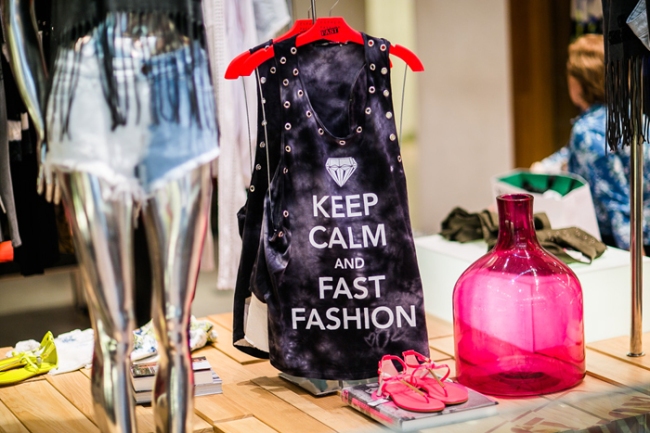The expression of fashion extends beyond one’s wardrobe and across cultural communities. It is cyclical and global at the same time allowing everyone to participate in the dialogue in his or her own way possible. Though it cuts across genders and social classes, today the lines have been slightly blurry with the advent of the high street and globalisation which has increased awareness and buying for every section of the society in their own right. While this is an achievement for those in the industry, on the other side, this free-flowing availability and abundance of choices is being debated on the line of ethics and originality bordering on duplicity of goods.
The biggest fear for any designer brand is counterfeiting and duplicity of the original design which these days is readily available on the internet with images in varying sizes and angles, giving one a precise idea of what the collection is all about. With the high street banking upon fast fashion at fairly friendly and affordable prices, their ability to attract customers on a tight budget with a growing penchant for trendy fashion is at an all-time high. Innovative window dressing that changes every week and constant store refurbishing shows great promise to the style-hungry customer who gets his/her updates on fashion and lifestyle through freely distributed magazines outside the tube, purchased or subscribed one’s and of course, the internet.
Primark, the retail giant which entered Britian in 1995 and is now soon to enter the US with no advertising but its army of followers alone is the perfect example of what happens when design enters the retail-supply chain. With everyone gloating about the fading of originality and undue credit, stores like Primark, Zara,H&M, ASOS to an extent and F21 are jumping the waiting time to get ahead of the bargaining bins, endless shopping sins (It’s never a sin, btw) to keep up with the dynamically evolving needs of its consumers. And thus giving birth to ‘Primania’- yes, its a term like selfie, hashtag and OOTD.
The concept of trickle-down isn’t something that has come to existence just in the recent past. It has been there as far as evolution and aspiration has existed. Veblen first put it to theory (Leisure Class) in the late 18th century when fashion was something made readily available to the exclusive elite. However, even then the rest of the classes dressed up just as much with the only difference in style and choice of fabric in order to distinguish between the classes. Today style is a form of expression of a person’s mood, belief, choice and system of being; it is much more than social status and evaluation of his personal finances and strength. When it is something that is taken so seriously why is the democratization of fashion being scrutinized this heavily? Ethical reasons and duplicity of design isn’t appreciated in an industry of creative processes which is probably the reason most people involved with brands, design houses and brand loyalists are against the steady rise of the high street where trends are arriving at breakneck speed.
However, trends being made readily available to everyone who wants to be a part of the process is not a heinous crime. With socialists fighting for equal rights for all irrespective of religion or gender and reforms being made to legalize gay marriages, why are we still far away to allow the democratization of fashion?
With everyone wanting to be inspired and emulate the mannerisms of those that they aspire to be, the freedom to be part of a community that is radical, expressive and at the helm of evolution, the pace of fashion cannot be controlled. However, it can be moderated for ethical reasons so as to allow equal participation and representation of one and all.
P.S- It’s my attempt at intellectualising fashion.


Hey, nice post! I’m Cameron and I’m very interested in fashion and style. I think you would enjoy my posts; I would really appreciate a follow back! Thanks!
Aw- thank you so much!xx